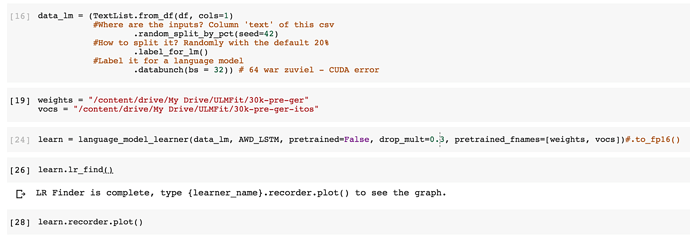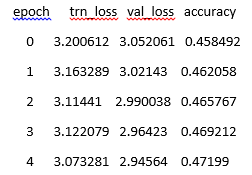I will train a language model for Turkish. I dumped the wiki articles and extracted them into json thanks to @Moody 
Now, I am wondering if there is any best practices for preprocessing the wiki text before tokenization step.
For example some trivial things I’ve come across is to replace \n\n with single whitespace, to remove Section::: and also remaining html tags from the articles as it’s not language related but rather related to wikipedia’s structure.
Here is a sample text (SPOILER ALERT)
Albus Percival Wulfric Brian Dumbledore (1881-1997), J.K. Rowling tarafından yazılmış Harry Potter serisindeki bir kurgusal karakterdir.
Çok zeki, araştırmacı, sakin ve kendini duygularına kaptırmayan çok güçlü bir büyücüdür. Gençliğinde aşırı güç meraklısıdır, daha sonra daha mantıklı davranmaya karar verir. (Kibar, biraz ilginç ve güçlü yapısıyla tipik iyi büyücü özelliklerini taşımaktadır.) Harry Potter'ın sorunlarını anlayışla karşılamasıyla ona diğer öğretmenlerden daha 'iyi' davrandığı söylenebilir. Herkes tarafından sevilen ve sayılan bir büyücü olan Dumbledore, Lord Voldemort'un korktuğu yegane büyücüdür. Sihir otoritelerinin genel kanısına göre de gelmiş geçmiş en güçlü büyücüdür. Dumbledore'un yaşamı 116 yıl sürmüştür. Altıncı kitapta (Harry Potter ve Melez Prens) Severus Snape tarafından Avada Kedavra lanetiyle öldürülen Dumbledore, 1944-1997 tarihleri arasında Hogwarts Cadılık ve Büyücülük Okulu'nun müdürlüğünü yapmıştır.
Uzun ve ince olarak betimlenen Dumbledore'un uzun saç ve sakalları vardır. Ünlü büyücünün, mavi gözleri, çok uzun ve kancalı bir burnu ve uzun parmakları vardır. Yarım ay çerçeveli gözlükleri ve şaşaalı cübbesi ilk göze çarpan şeylerdir. Sol dizinin üstünde Londra metro'sunun haritasını gösteren, bir düellodan kalma bir yara izi vardır. Dumbledore'un Çikolatalı Kurbağa kartına göre oda müziği ve on lobutlu bowlingden hoşlanmaktadır. 1945'te kara büyücü Grindelwald'u yenmesi ejderha kanının 12 ayrı konuda kullanılışını bulması ve arkadaşı Nicholas Flamel ile simya konusunda yürüttüğü çalışmalarla ünlüdür. Sihirli ya da sihirsiz bütün şekerli yiyeceklere karşı bir zaafı vardır. Ofisini koruyan heykelin şifresini de genellikle bu tatlı isimlerinden seçer. Ancak, Bertie Bott 1930 doğumlu olduğu için, Dumbledore'un "gençlik" ile neyi kastetitiği anlaşılamamıştır. En sevdiği tatlar ise, Böğürtlen ve Marmelat'tır. Dumbledore, aynı zamanda bir örgü meraklısıdır. Ayrıca yazar J.K Rowling' in yaptığı açıklamaya göre kendisi eşcinseldir ve Gellert Grindelwald'a aşıktır.
Yazarın böylesine bilge bir kişiye "Albus Dumbledore" ismini vermesi rastgele yapılmış bir seçim değildir. Albus, Latince "beyaz" anlamına gelir ve "bilgelik" ile "aydınlanmayı" temsil eder. Dumbledore ise "yabanarısı" (İngilizce "bumblebee") anlamına gelmekle yazar tarafından özellikle seçilmiştir çünkü İngilizce'de "bumble around", "etrafta dikkatsizce gezinmek" demektir. Yazar Dumbledore' u yaratırken onun Hogwarts koridorlarında dolaştığını hayal ettiği için bu fiille ilintili bir isim seçmiştir.
**Section::::Karakter gelişimi.**
Dumbledore'un bir kız kardeşi ve bir erkek kardeşi vardır
Are there any best practices to follow for this dataset?
Thanks! 
def fix_html() doesn’t seem to account for all html tags. For example:
('<nowiki>', 7815),
('<br>', 7165),
('<BR>', 582),
('</div>', 572),
('<onlyinclude>', 555),
('</onlyinclude>', 539),
('<br \\n>', 461),
('<li>', 447),
('</ref>', 445),
('<noinclude>', 194),
('<ENTER>', 59),
('</noinclude>', 58),
('</poem>', 54),
...
P.S. Only 6305/328830 articles have such html tags, so I can simply discard them. But I was just curious to know what more experienced language modelers do as a best practice.



